In the ever-evolving world of SUVs, the compact SUV segment continues to grow in popularity, leading automotive enthusiasts to compare standout contenders like the Mazda CX-60 and the Volvo XC40. Both vehicles boast contemporary design, innovative technology, and driving comfort, but they approach the market with distinct philosophies. In this article, we will closely examine the technical aspects, innovations, and overall performance of these two vehicles to help you make an informed choice.
Mazda CX-60 vs Volvo XC40 – Which car suits you better?
Compare performance, boot capacity, efficiency and price at a glance.
Find out which car is the better choice for you – Mazda CX-60 or Volvo XC40?
Performance and Engine Options
The Mazda CX-60 comes with a choice of powertrains that cater to a variety of preferences. It offers a plug-in hybrid with 327 HP and a diesel mild-hybrid engine that generates power levels of 200 HP and 254 HP, supported by an automatic gearbox. This versatility means drivers can select between impressive electric range and fuel efficiency, with consumption levels peaking at just 1.4 L/100km for the plug-in hybrid variant.
In contrast, the Volvo XC40 is powered by petrol mild-hybrid engines producing either 163 HP or 197 HP. While the XC40's performance is commendable, it doesn’t match the higher output offered by the Mazda CX-60. With a slightly higher consumption rate of approximately 6.5 L/100km, the XC40 positions itself towards traditional fuel efficiency rather than plug-in electric capability.
Driving Experience and Handling
The Mazda CX-60 surprises many with its driving dynamics, featuring options for both all-wheel drive and rear-wheel drive systems. The CX-60 achieves a quick 0-100 km/h sprint in just 5.8 seconds when equipped with the most powerful engine. The SUV’s stability and handling emphasize a sporty character often associated with Mazda vehicles, promising an engaging driving experience.
On the other hand, the Volvo XC40, with a front-wheel drive layout, takes a more understated approach to handling. With a 0-100 km/h time of 8.6 seconds for its base model, the XC40 is no slouch but offers a more comfort-oriented experience compared to the CX-60’s sportiness. The XC40 excels in city maneuverability thanks to its compact dimensions, and while it may not be the fastest in acceleration, it feels planted and secure on the road.
Dimensions and Practicality
When it comes to size, the Mazda CX-60 stretches to a length of 4745 mm, making it significantly longer than the Volvo XC40, which measures 4425 mm. This contributes to a greater trunk capacity of 570 liters in the CX-60 versus the XC40's 452 liters, offering more room for luggage and cargo.
Both SUVs comfortably seat five passengers, but the Mazda CX-60 has a slightly taller cabin and is rated to carry up to 612 kg of payload compared to the XC40’s 532 kg. This additional space and capacity make the Mazda a more appealing choice for families or those requiring extra storage.
Innovations and Technology
Both the Mazda CX-60 and Volvo XC40 are equipped with an array of technological innovations aimed at enhancing the driving experience. The CX-60 offers a sophisticated infotainment system with seamless smartphone integration, advanced driver assistance features, and an intuitive head-up display that improves driving safety. Mazda’s commitment to driver engagement is evident in its interior design, which prioritizes ergonomics and an uncluttered layout.
Volvo, on the other hand, integrates its well-known safety features into the XC40, including the latest advanced driver assistance systems, adaptive cruise control, and automatic emergency braking. Volvo’s infotainment system prides itself on a clean, minimalist design with a robust set of features, although some users may find it a bit less intuitive compared to Mazda’s setup.
Conclusion: Choosing Your SUV
The decision between the Mazda CX-60 and the Volvo XC40 ultimately comes down to personal preferences and priorities. If you seek performance, versatility in power options, and a roomier interior, the Mazda CX-60 shines as a remarkable contender. However, if safety features, comfort, and a premium feel matter more to you, then the Volvo XC40 sets the benchmark for those criteria.
Ultimately, both SUVs exemplify quality in the compact SUV category, proudly representing the expertise of their respective brands. Regardless of your choice, a test drive of both vehicles is essential to appreciate their unique offerings fully.
Here’s where it gets real: The technical differences in detail
Costs and Efficiency:
Price and efficiency are key factors when choosing a car – and this is often where the real differences emerge.
Volvo XC40 has a to a small extent advantage in terms of price – it starts at 36800 £, while the Mazda CX-60 costs 41900 £. That’s a price difference of around 5143 £.
Fuel consumption also shows a difference: Mazda CX-60 manages with 1.40 L and is therefore significantly more efficient than the Volvo XC40 with 6.50 L. The difference is about 5.10 L per 100 km.
Engine and Performance:
Under the bonnet, it becomes clear which model is tuned for sportiness and which one takes the lead when you hit the accelerator.
When it comes to engine power, the Mazda CX-60 has a evident edge – offering 327 HP compared to 197 HP. That’s roughly 130 HP more horsepower.
In acceleration from 0 to 100 km/h, the Mazda CX-60 is distinct quicker – completing the sprint in 5.80 s, while the Volvo XC40 takes 7.60 s. That’s about 1.80 s faster.
In terms of top speed, the Mazda CX-60 performs slightly better – reaching 219 km/h, while the Volvo XC40 tops out at 180 km/h. The difference is around 39 km/h.
There’s also a difference in torque: Mazda CX-60 pulls significantly stronger with 550 Nm compared to 300 Nm. That’s about 250 Nm difference.
Space and Everyday Use:
Cabin size, boot volume and payload all play a role in everyday practicality. Here, comfort and flexibility make the difference.
Both vehicles offer seating for 5 people.
In curb weight, Volvo XC40 is somewhat lighter – 1688 kg compared to 1890 kg. The difference is around 202 kg.
In terms of boot space, the Mazda CX-60 offers clearly perceptible more room – 570 L compared to 452 L. That’s a difference of about 118 L.
In maximum load capacity, the Mazda CX-60 performs noticeable better – up to 1726 L, which is about 398 L more than the Volvo XC40.
When it comes to payload, Mazda CX-60 a bit takes the win – 612 kg compared to 532 kg. That’s a difference of about 80 kg.
Who wins the race?
The Mazda CX-60 proves to be wins the duel decisively and therefore becomes our DriveDuel Champion!
Mazda CX-60 is the better all-rounder in this comparison.
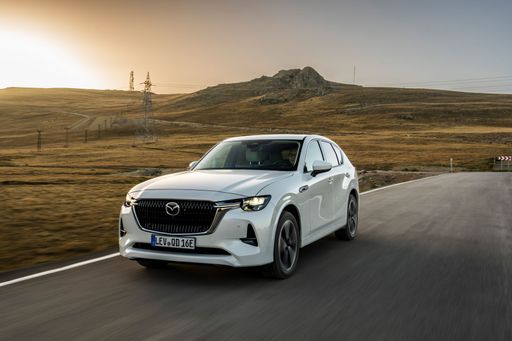 @ Mazda Motor Corporation
@ Mazda Motor Corporation
Mazda CX-60
Mazda CX-60
The Mazda CX-60 pairs sculpted, understated looks with poised handling and a cabin that punches above its class, making long drives feel unexpectedly civilized. For buyers who want a premium feel without the showroom swagger, it's the sort of car that earns respect quietly — and still manages a wink when you push on.
details @ Mazda Motor Corporation
@ Mazda Motor Corporation
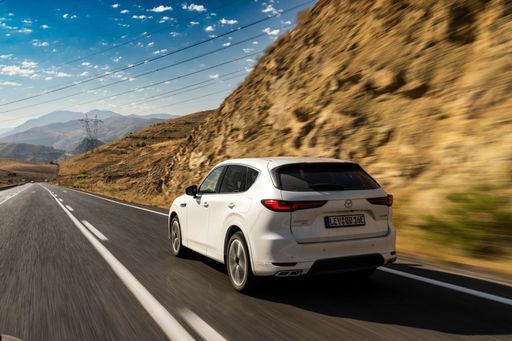 @ Mazda Motor Corporation
@ Mazda Motor Corporation
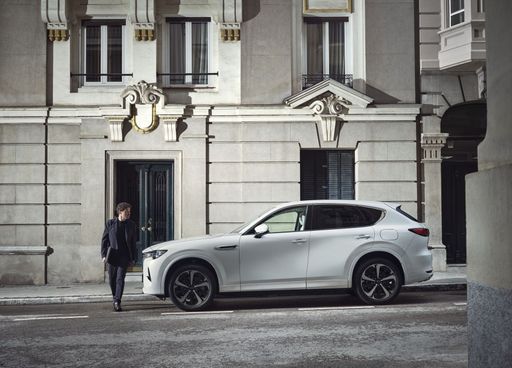 @ Mazda Motor Corporation
@ Mazda Motor Corporation
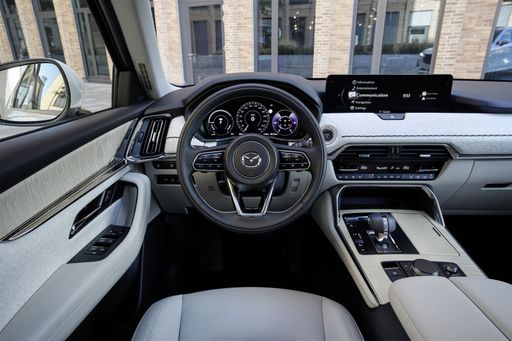 @ Mazda Motor Corporation
@ Mazda Motor Corporation
Volvo XC40
The Volvo XC40 wraps Scandinavian minimalism into a compact, city-ready SUV with a premium cabin that feels both practical and grown-up. It will suit buyers who prize safety, clever storage and a composed ride, proving that small dimensions don't mean small personality.
details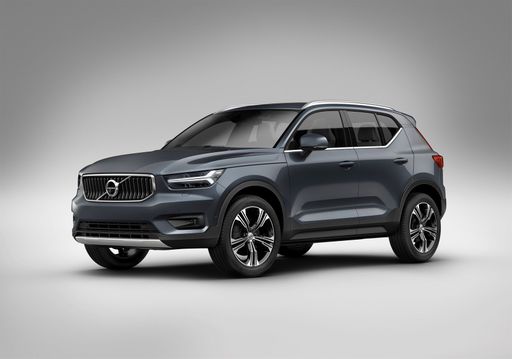 @ Volvo Cars
@ Volvo Cars
 @ Volvo Cars
@ Volvo Cars
 @ Volvo Cars
@ Volvo Cars
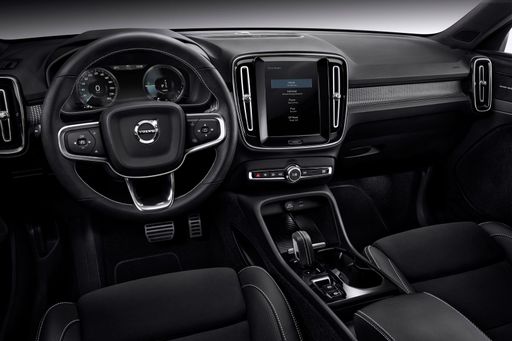 @ Volvo Cars
@ Volvo Cars
 @ Volvo Cars
@ Volvo Cars
 @ Mazda Motor Corporation
@ Mazda Motor Corporation
|
 @ Volvo Cars
@ Volvo Cars
|
|
|
|
Costs and Consumption |
|
|---|---|
|
Price
41900 - 56800 £
|
Price
36800 - 47200 £
|
|
Consumption L/100km
1.4 - 5.4 L
|
Consumption L/100km
6.50 L
|
|
Consumption kWh/100km
-
|
Consumption kWh/100km
-
|
|
Electric Range
64 km
|
Electric Range
-
|
|
Battery Capacity
-
|
Battery Capacity
-
|
|
co2
31 - 139 g/km
|
co2
147 - 148 g/km
|
|
Fuel tank capacity
50 - 58 L
|
Fuel tank capacity
54 L
|
Dimensions and Body |
|
|---|---|
|
Body Type
SUV
|
Body Type
SUV
|
|
Seats
5
|
Seats
5
|
|
Doors
5
|
Doors
5
|
|
Curb weight
1890 - 2055 kg
|
Curb weight
1688 kg
|
|
Trunk capacity
570 L
|
Trunk capacity
452 L
|
|
Length
4745 mm
|
Length
4425 mm
|
|
Width
1890 mm
|
Width
1863 mm
|
|
Height
1680 - 1688 mm
|
Height
1652 mm
|
|
Max trunk capacity
1726 L
|
Max trunk capacity
1328 L
|
|
Payload
581 - 612 kg
|
Payload
532 kg
|
Engine and Performance |
|
|---|---|
|
Engine Type
Plugin Hybrid, Diesel MHEV
|
Engine Type
Petrol MHEV
|
|
Transmission
Automatic
|
Transmission
Automatic
|
|
Transmission Detail
Automatic Gearbox
|
Transmission Detail
Dual-Clutch Automatic
|
|
Drive Type
All-Wheel Drive, Rear-Wheel Drive
|
Drive Type
Front-Wheel Drive
|
|
Power HP
200 - 327 HP
|
Power HP
163 - 197 HP
|
|
Acceleration 0-100km/h
5.8 - 8.4 s
|
Acceleration 0-100km/h
7.6 - 8.6 s
|
|
Max Speed
200 - 219 km/h
|
Max Speed
180 km/h
|
|
Torque
450 - 550 Nm
|
Torque
265 - 300 Nm
|
|
Number of Cylinders
4 - 6
|
Number of Cylinders
4
|
|
Power kW
147 - 241 kW
|
Power kW
120 - 145 kW
|
|
Engine capacity
2488 - 3283 cm3
|
Engine capacity
1969 cm3
|
General |
|
|---|---|
|
Model Year
2024
|
Model Year
2024
|
|
CO2 Efficiency Class
B, D, E
|
CO2 Efficiency Class
E
|
|
Brand
Mazda
|
Brand
Volvo
|
What drive types are available for the Mazda CX-60?
The Mazda CX-60 is offered with All-Wheel Drive or Rear-Wheel Drive.
The prices and data displayed are estimates based on German list prices and may vary by country. This information is not legally binding.
